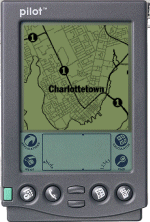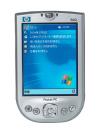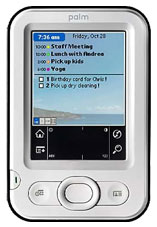PDAs thru the Years…
Though ever evolving, personal digital assistants (PDAs) have been around for twenty years in one form or another. You may remember the Psion Organizer of 1988, a clunky two-pound device with a keyboard, tiny monochrome screen and limited memory that nevertheless presaged later PDAs in that it organized appointments and addresses quite handily. The first research into the use of computers as memory aids was conducted using the Psion.
Apple Computer’s Newton was the first PDA to allow a form of handwriting recognition. The device, which hit the market in 1993, never caught on, however, though Newtons as collector’s devices are quite a hit on Ebay.
It was not until 1996, with the release of the PalmPilot, that PDAs emerged as consumer must-have devices. Lightweight, elegant and sporting a handwriting recognition innovation called Grafitti, the Palm Pilot led the way towards real handheld computing, putting useful secretarial functions right in your hand. The co-inventor of Grafitti, Jeff Hawkins, soon launched a new company, Handspring, and released a competing device that allowed insertion of portable modules, such as digital cameras, cell phones, music players and vibrating alarms, allowing users to customize their PDAs for a wide range of uses.
Microsoft got into the act in 1998, having designed a stripped-down version of their Windows operating system for a set of devices called Pocket PCs. These devices set out to include all the organizational features of the Palm PDAs, but added native access to Microsoft Office software and onboard video and music via Mediaplayer. Within a few months, there were thirty or so competing PDAs on the market, offered by electronics giants Sony, Toshiba, Hewlett-Packard, Compac and others. Timex and Microsoft even paired up to design a wristworn PDA, the Timex Data Link watch, and Alphasmart launched a mini-laptop with onboard Palm software.
By 2002, a shakeout in the industry was well underway. Handspring
merged with Palm and began to produce combination cell phone – PDA
devices, along with new, more powerful Palm PDAs. Sony quit
the field altogether, removing all eight of their quite innovative
PDAs from the market. Cellphones began to take over the space
in advertising supplements once reserved for PDAs. Now Palm
sells only four PDA versions: the low-end Z-22 (which provides
a huge advance in functionality and features over the decade-old
Palm Pilot), the mid-priced E2, the T/X with wireless capability,
and the chunky LifeDrive (with its four gigabyte hard drive for music
and video storage). The only companies selling Pocket PCs – now
called Windows Mobile Devices – in the U.S. are Dell and Hewlett-Packard. This
makes choosing a device easier, especially since the current products
are rock-solid and well-tested handheld computers.
How does one go about selecting a PDA for use as a cognitive aid
in job-coaching settings? Let's examine how these devices have been
used as cognitive aids over the years, then move on to a assessment
and use considerations.
|


 The Apple Newton.
The Apple Newton.  The original Palm Pilot.
The original Palm Pilot.  HP 1940 Pocket PC.
HP 1940 Pocket PC.  Palm Z 22 PDA.
Palm Z 22 PDA.